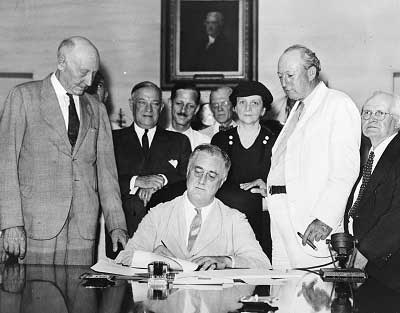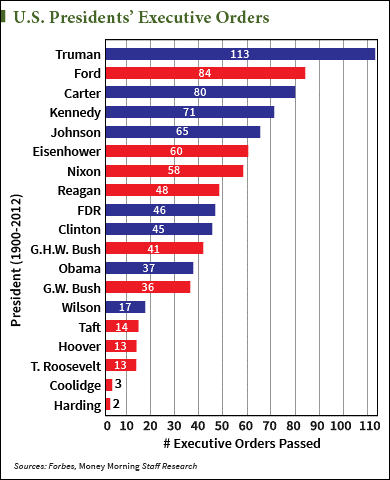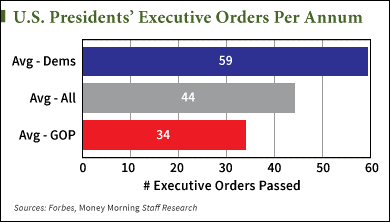
A brief look at the history of executive orders shows us just how powerful these directives can be...
They offer the president an immediate way to advance his policies without the approval of the judicial and legislative branches. They embody - as one former White House aide, Paul Begala, put it to The New York Times in 1998 - "the stroke of the pen, the law of the land. Kind of cool."
But because of their powerful immediacy, executive orders are oftentimes more controversial than "cool." And what makes them rather contentious, as a whole, is the fact there is actually no specific mention of them in the U.S. Constitution. Instead, presidents have long assumed the power to issue executive orders is implied in Article II of the Constitution:
- "The executive power shall be vested in a President of the United States."
- "The President shall be Commander in Chief of the Army and Navy of the United States."
- "He shall take care that the laws be faithfully executed."
With that in mind, let's have a look at some of the most memorable of such presidential directives ever issued...
The Most Memorable in Our History of Executive Orders
- George Washington was the first president to issue an executive order on April 22, 1793. He instructed federal officers to prosecute any citizens who interfered with the war between England and France.
- The First and Second World Wars brought the greatest surge in the use of executive orders. Congress extended unparalleled power to the presidents during these times to act in the best interest of the nation while at war.
 Then, in post-world war times, President Truman issued his slew of presidential proclamations that awarded him title of "the highest rate of decree" of these directives - a designation he still holds today with 113 EOs per annum. Truman's most controversial executive order came in 1952 after he tried to reach a consensus with steelworkers on strike. When that consensus was not met, he ordered the federal government to seize control of the steel mills. Later, in a 6-3 ruling, the Supreme Court rejected Truman's order as unconstitutional.
Then, in post-world war times, President Truman issued his slew of presidential proclamations that awarded him title of "the highest rate of decree" of these directives - a designation he still holds today with 113 EOs per annum. Truman's most controversial executive order came in 1952 after he tried to reach a consensus with steelworkers on strike. When that consensus was not met, he ordered the federal government to seize control of the steel mills. Later, in a 6-3 ruling, the Supreme Court rejected Truman's order as unconstitutional.- Another controversial executive order came on Dec. 4, 1981, from President Ronald Reagan. Reagan's "Executive Order 12333" (referred to as "twelve-triple-three") handed the NSA virtually all of the powers under which the agency operates to this day - allowing the agency to collect the data that so many now find to be offensive.
- And then there's President Obama's controversial first day in office on Jan. 9, 2009, when he signed three executive orders to draw a clear distinction between the policies of his administration and those of his predecessor, President George W. Bush.
While the current president has not issued the most executive orders, he has, however, issued the most executive actions...
You see, there are directives known as "presidential memoranda" that effectively act just like executive orders. Combined with executive orders, the Obama administration's use of executive actions is rather unprecedented. Have a look...
What do you think of the history of executive orders? Tell us on Twitter @moneymorning or like us on Facebook.
Related Articles:
- The New York Times: True to Form, Clinton Shifts Energies Back to U.S. Focus
[mmpazkzone name="end-story-hostage" network="9794" site="307044" id="138536" type="4"]



